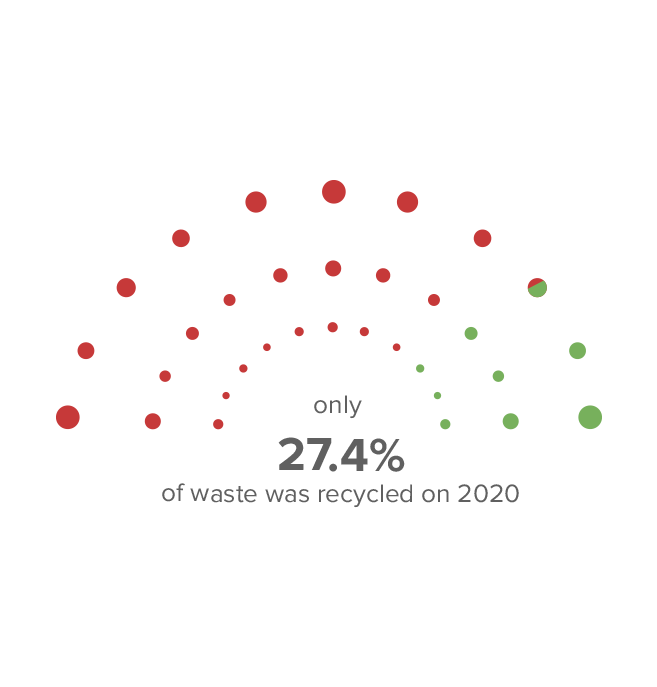Is your facility also failing at recycling?
Recycling isn’t working in the US and companies are overspending on recycling programs with no ROI
Tons of high-traffic facilities across the country are having issues with recycling, and with last year’s economic activity picking up, we are dealing with more waste than ever.
We know that recycling is good for the planet, but no one said it was easy. Time and money are invested into recycling only to get rejected by recycling facilities due to contamination. Many facilities also struggle with composting and educating the public without seeing any quantifiable results. No wonder why less than 35% of waste ends up being recycled.

Since 2018, China stopped taking US recyclables due to high contamination. To make things worse in 7 years, Earth’s temperature will increase by 34 ºF, from which there may be no return. It is known that recycling can help reduce our carbon footprint, but what is the missing link?

Trash is supposed to be simple
What isn’t working with today’s recycling?
With different regulations across the country, users are confused about what can be thrown into the recycling bin, and even with the proper knowledge it often comes down to convenience. To add to the problem, janitorial staff that is not properly trained can also send recyclables to the landfill – if they fail to tell the difference between waste and recyclables.
Contamination:
An entire recyclable load can be ruined by improperly sorted items. Waste often gets mixed up because of unawareness, disinterest, inconvenience, or a combination of these. People can think a coffee cup is recyclable, but its plastic coating makes it complicated.
Inconvenience:
It is not uncommon that a person will not go the extra mile to search for a recycling bin. At public facilities such as airports, hospitals, or convention centers, people are in a rush and will discard their waste without a second thought.
Lack of Education:
Even when people have every intention to recycle in a public space, they are often confused about what bin to use for which specific items. So they end up misplacing their recyclables or just discarding everything as landfill.
China Ban:
Due to high contamination, China stopped buying U.S. recyclables in 2018. For decades, the U.S. was heavily dependent on China, exporting millions of tons of recyclables. This resulted in an inefficient domestic recycling infrastructure when the market disappeared.
No Compostable Alternatives:
Facilities are often unaware of the power of composting. From organic waste to compostable alternatives to popular waste items. Companies can see a reduction in waste collection costs by diverting more from landfills.
If recycling is still the answer…
What should we be doing differently?
There is a gap in today’s recycling. Every year more companies set Zero Waste goals but at a high cost; signage is ineffective, waste audits are inefficient, and recycling education is still a work in progress.
Increase user education:
Convenient education channels are needed at the point of disposal. The general public is confused about recycling and composting rules.
Reduce contamination:
Circular materials can no longer be recovered when mixed with landfill items. Facilities struggle to achieve acceptable thresholds and avoid fines.
Positive recycling ROI:
Due to a lack of public participation, high contamination, and low diversion rates, zero waste plans can be very expensive to execute.
Data for decision-making:
The lack of waste data makes it hard to continuously monitor and work towards goals.
Smart recycling technologies:
Revolutionary developments like TrashBot are disrupting the recycling industry with on-site diversion, built-in user education, waste data, and analytics.
